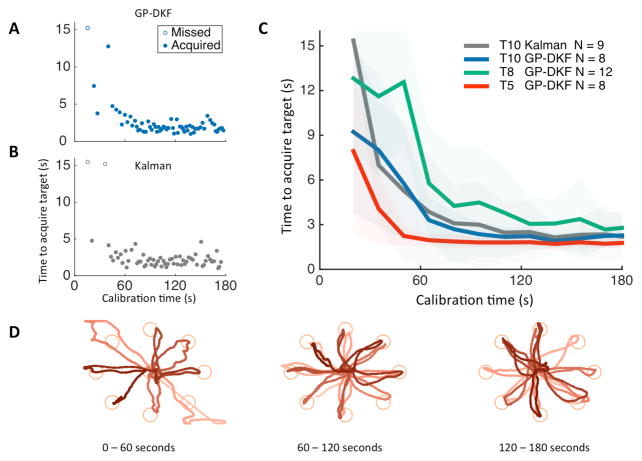Fig. 2.
Rapid calibration during the Radial-8 task. Participant T10 performed a three-minute calibration sequence with either the GP-DKF (A) or the Kalman (B) decoders. Targets were acquired when the cursor overlapped the target for 300ms, with a 15-second timeout. (C). Multiple calibration sequences from participants T5 (red), T8 (green) and T10 (blue) were done using the GP-DKF decoder, and with the Kalman decoder in T10 (grey). The thin dark lines are the average amount of time to acquire a target across all blocks (shaded area is +/− 1 standard deviation). Averages are computed by binning data in 15-second increments, with a 5 second offset from calibration start. (D). Example cursor trajectories during calibration using the GP-DKF decoder (participant T5). The brightness goes from light to dark as time elapses during the 60 second interval of closed-loop neural cursor control. Data were used from trial days: 30 and 33 (T5); 662, 665, (T8); and 112, 203, 215, 236 (T10).

